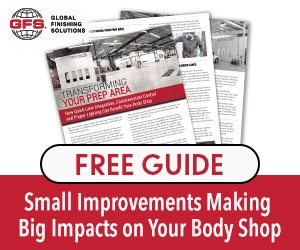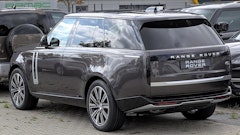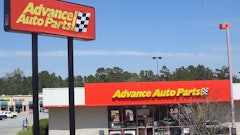
By Jeff Sanford
Toronto, Ontario — July 28, 2016 — This week we look at a new virtual reality technology that might spell the end of the automotive dealership, how Daimler is expected to turn to 3D printing and the latest in wildlife collision avoidance technology: thousands of cougars.
– CBC News reports that a Thunder Bay man is holding out hope that “his classic car, stolen during a recent trip to a Minnesota car show, will turn up safe and sound … Gerald Chartier had taken his 1968 Chevrolet Chevelle SS two-door coupe to the Street Machine Nationals show in St. Paul, Minn., last weekend … Sometime early Sunday morning it was stolen from the parking lot of the hotel where Chartier and some fellow car show entrants were staying.” That hurts. According to the story, Chartier got the car in 2004 and did a complete restoration. He was quoted as saying that, “My maiden voyage … was Canada Day in 2009 … For them to steal things like this, that’s a little more personal … Some of the other cars that were there were cars that were worth more money than mine. They walked right past those cars and took mine.” Someone likes the model, apparently.
– Publicly traded companies released their second quarter earnings this week. Charlie Shaver, the CEO of Axalta Coating Systems, led a conference call. According to Shaver, “Second quarter net sales rose 4.2 percent from last year. [Earnings were] largely flat in the second quarter at $253 million, versus $256 million last year.” He noted the company had “something of a hill to climb against last year’s particularly strong second quarter, which included strong refinish performance and robust volume growth rates in both transportation and end-markets … Earlier in the year, we acknowledged the apparent [anxiety] of the markets regarding the cyclical health of our end-markets.” That is, the company is expecting the booming car market to slow somewhat. “…we are on-track to grow the company in most regions and end-markets in spite of some of the persistent headwinds. We face continue challenges from any emerging market economies as well as weaker demand from some heavy-duty truck and other commercial vehicle products … That said, our core refinish customers and sustained demand in automotive OEM have enabled our overall performance to track expectations and we believe the second half will bring growth opportunities to allow us to hit our targets.”
– LKQ also reported earnings this week. The company enjoyed a huge jump in earnings per share, which climbed a remarkable 21 percent, to $0.47, beating analyst estimates. According to a report from the US-based brokerage William Blair, “The story of the quarter was really improved profitability from the company’s various initiatives, along with some benefit from higher scrap steel prices … Total revenue rose 33 percent, to $2.5 billion … North American parts and service organic growth was just 3.1 percent during the quarter, down from the recent range of 5-6 percent and guidance of 5-7 percent. On the surface, this may cause concern; however, the warm winter weather resulted in fewer accidents and overall repair activity. This was echoed on the mechanical side by many of the aftermarket retailers … We still believe excluding the dampened impact from weather that the components are in place to drive North American parts and service organic revenue up in the 6 to 7 percent range over the next few years with an increase in miles driven, more parts per repair, and more cars in LKQ’s three- to nine-year sweet spot … The glass business seems like it is already off to a good start and contributed $210 million of revenue during the quarter, better than the $180 million we modelled.”
– Fiat Chrysler announced a recall this week. A “faulty crimp in a wiring harness” will see 2015 model years of the Chrysler 200, Ram ProMaster City and Jeep Renegade, Cherokee needing to be serviced. Also included in the recall are select Cherokees produced in 2014. Canada has over 35,000 units that need attention.
– Continuing effects of the VW scandal: Audi plans to have three electric vehicles s by 2020 as part of a new major plan. CEO Rupert Stadler told a German newspaper that the company “expects electric vehicles to account for 25 to 30 percent of its sales by 2025.” The SUV is rumored to be called Audi Q6 e-tron and will be built at the company’s Belgium facility.
– Electrek reports that Jason Hughes, the “so-called ‘Tesla Hacker’ is building a 1,000 hp all-electric vehicle. He is combining a custom Tesla powertrain with two Chevy Volt battery packs and is thought to be installing all of this in the body of a Mitsubishi 3000GT. The two Chevy Volt battery packs will be supported by six Tesla battery modules. The engine will produce 62 kWh, which will generate insane torque. electric motors, of course, can reach peak torque at, basically, zero miles an hour, one of the interesting benefits to electric engines.
– A slew of websites reported on a seriously creepy bit of art. “A trauma surgeon, artist, and crash investigator came together to create Graham,” a sculpture of what a man evolved to survive car crashes might look like. If you haven’t seen it yet, you can take a look at this link.
– The end of the dealership? A report on tech website tech.co highlights a new company, Evox Productions, which “aims to replace old-school car dealerships with a virtual reality room that can display far more cars in all the 3D detail you’ll need to make a decision.” The app is called RelayCars. It for use with the Oculus VR headset. “We think VR is going to be the next big thing,” a company executive was quoted as saying. “It’s not just for the auto industry. It’s going to have as large an impact as a smartphone or the iPod or colour TV. There’s going to be a very steep ramp-up.”
– Daimler is expected to turn toward 3D printing to produce spare parts for its trucks. A trade industry journal, 3dprintingindustry.com, claims that Daimler has joined, “the likes of Audi and BMW, who have both adopted additive manufacturing for producing spare parts on a ‘just in time’ basis.” The company will introduce 3D printing on a limited basis from September. “It will start with simple plastic items like spring caps, mountings, air and cable ducts and clamps. In the end, though, it is almost inevitable that every service centre in the world will have a 3D printer and the capability to produce replacement metal and plastic parts on site,” according to the report.
“Shipping parts around the world is expensive … The companies have to produce vast amounts of spare parts to cover their entire catalogue of old and new vehicles. They then have to ship them globally and store them, which is clearly an inefficient and expensive process. With 3D printing they can keep a central database of files and each region can simply print the part as and when required. The savings are massive and it also means that the companies can speed up their service. With this system they don’t have to order obscure parts from a central depot and leave a customer’s vehicle off the road while they wait for delivery. When a car or truck goes out of production, it’s almost impossible to ensure that there is a healthy supply of parts available. With 3D printing … a manufacturer can continue to support its older models by simply saving the files on the database.”
– Could 10,000 cougars prevent hundreds of automobile accidents? An article in a scientific journal thinks so. A paper in the journal Conservation Letters, notes that, “…deer are involved in 1.2 million motor vehicle collisions, resulting in around 200 deaths.” The paper goes on to suggest that by bringing back populations of predators that eat deer, such as cougars, the number of deer-related auto collisions could be drastically reduced.
“Large carnivores, or ‘nature’s deer control,’ could provide a much-needed solution,” says Sophie Gilbert, a professor of wildlife ecology at the University of Idaho and the author of the paper. She calculates that a “reestablished cougar population decreases the number of deer-vehicle accidents by 22 percent. The estimate is based on the assumption that a single cougar would kill 259 deer over an average 6-year lifespan.”
Gilbert calculates that each cougar would yield an approximate $37,600 savings in auto insurance claims.
– Last but not least, a massive hail storm rolled through Quebec this week and damaged quite a few cars. You can check out the CBC’s report in the player below.



















